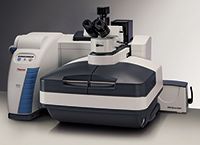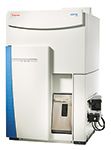Thermo Fisher Scientific
Company Description
Thermo Fisher Scientific is the world leader in serving science, enabling our customers to make the world healthier, cleaner, and safer. Our goal is to make our customers more productive and to enable them to solve their analytical challenges, from routine testing and process control, to complex research and discovery. We offer a wide range of products including analytical instruments, equipment, reagents and consumables, software, and services for customers within pharmaceutical and biotech companies, chemicals and manufacturing, universities and research institutions, government and protective services, and environmental industries.

Chief Spectroscopic Techniques Supported
- AA
- ICP–OES
- ICP–MS
- FT–IR
- NMR
- FT–NIR
- UV–Visible
- Raman
- EDS/WDS/EBSD
- OES
- XRD
- XRF

Markets Served
Our growing portfolio of products includes innovative technologies for a multitude of markets including chemicals and polymers, food safety, environmental testing, forensics, life sciences, materials science, and pharmaceutical.

Major Products/Services
Thermo Scientific(tm) spectroscopy instruments are ideal for investigative analysis or quality control applications. Spectroscopy systems are used to determine the molecular or elemental composition of a wide range of complex samples, including liquids, solids, and gases. We offer an expansive range of techniques, such as FT-IR, NMR, FT-NIR, infrared microsampling, Raman spectroscopy, AA, ICP-OES, ICP-MS, and ARL OES, XRD, and XRF spectrometers.

Thermo Fisher Scientific
5225 Verona Road
Madison, WI 53711
TELEPHONE
(800) 532-4752
FAX
(608) 273-5046
info.spectroscopy@thermofisher.com
WEB SITE

Year in Review: The Latest in Raman Spectroscopy
December 26th 2024This year-in-review showcases the standout technical articles, compelling interviews, and key news stories that defined the pages of Spectroscopy. In this year in review, the editors of Spectroscopy highlight some of the top published technical articles, interviews, and news content published.